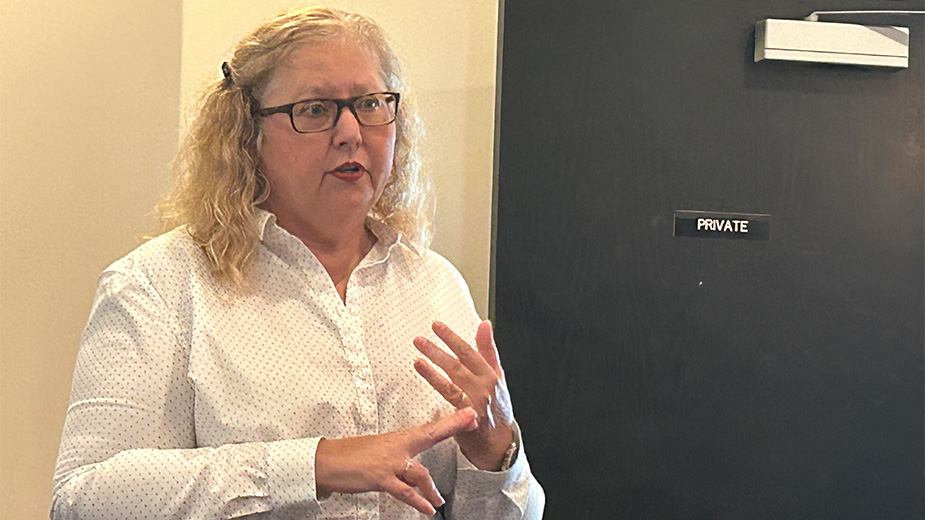Many Options to Ease Student Loan Debt
YOUNGSTOWN, Ohio — Student loan debt is the second-highest consumer-debt category, behind mortgage debt and higher than auto loans and credit cards.
According to a report by the Federal Reserve Bank of New York, student loan debt from more than 44 million borrowers reached $1.46 trillion in the fourth quarter of 2018, up from the $600 billion a decade ago.
On average, each member of the class of 2018 owes $29,800, Student Loan Hero reports.
Taking early action can help prevent young people from being one of these statistics. Saving for college education should start when a child is two weeks old or once they receive a Social Security number.
“That’s a great time to do it because the money has more time to compound and grow,” says Valerie D’Apolito, financial adviser with Edward Jones in Boardman.
She suggests opening a 529 plan. “Family members and friends can contribute to it, so when a child is younger and he receives gifts of money, it can be put into the plan.”
The 529 plan grows tax-free for the beneficiary’s educational expenses, which include tuition, room and board, books and computers related to coursework. Anyone can contribute up to $15,000 annually before there are tax consequences.
“There are several different options within 529 plans on how the money is invested,” D’Apolito says. “Generally it’s invested in mutual funds based on the child’s age and the risk tolerance of the owner. With a 529, the child is the beneficiary and the parent or grandparent is the owner.”
According to The Wall Street Journal, American families have $329 billion in 529 plans, an average of $24,153 per account.
There are also tax advantages that come with the plan, which vary by state. In Ohio, contributions of up to $4,000 annually are tax-deductible; in Pennsylvania contributions up to $15,000 for single filers and $30,000 for joint filers can be deducted.
While 529 plans have traditionally been used as funds for higher education, families are able to withdraw up to $10,000 tax-free to pay for primary education.
“If you have money left over in a 529 plan, the beneficiary can be changed,” D’Apolito says. “If you have money that you’re absolutely not going to use and not pass on to another family member, even in the next generation, you can take that money out and pay tax on the gain and a 10% penalty to the IRS.”
Having a 529 plan is a great start to paying for an education, but it could be insufficient to fund an entire university education.
For such cases, Elaine Ruse from Youngstown State University suggests students take advantage of the Ohio’s College Credit Plus program, which enables high school students to take college courses that count for credit in high school and college.
“Some will have a year or more of completed college courses and that’s a way to reduce the amount of debt you accrue,” says Ruse, director of YSU’s Office of Financial Aid and Scholarships.
For the 2018-19 school year, tuition for undergraduate students at YSU is $8,899.19 per year and will remain this amount for all new and incoming students. That’s because of the Penguin Tuition Promise, which means “we’re freezing tuition when you enroll,” Ruse says.
The cost of enrollment at YSU stays the same for four years for students in that class. There is a surcharge of $360 for out-of-state students.
For students considering a four-year university, such as YSU, they can apply for admission in August of their senior year of high school and begin their Free Application for Federal Student Aid forms, or FAFSA, beginning Oct. 1.
FAFSA will determine a student’s eligibility for federal and state grants, including work-study employment and the Federal Supplemental Educational Opportunity Grant, awarded to the highest-need students at each institution.
Financial counselors are available at YSU and can meet with students and their families to help them go through this process.
Each year, YSU offers merit-based scholarships that range from $1,000 annually up to a full-tuition award based on the student’s credentials, GPA and ACT or SAT score.
In the 2017-18 academic year, YSU awarded more than $14 million in merit-based scholarships.
“It’s to assist students for their payments of college, recognize their accomplishments and also try and be competitive against other institutions,” Ruse says.
The Youngstown State University Foundation is at the center of much of the funding on campus, she notes. “We also have numerous, miscellaneous scholarships.”
Before a student starts at YSU, he receives a complete financial aid package that includes his student loan eligibility, so he knows what’s available after scholarships, grants and financial aid is received.
In the 2017-18 academic year, 76% of YSU students received some form of financial aid, 65% received gift aid, 49% borrowed and 2% received federal work-study employment.
“Interestingly, the loans are on a decline,” Ruse says. During the 2016-17 year, 52% borrowed and in 2015-16 54% did so.
Of YSU students who graduated in 2018, 71% had to borrow and the average debt of each was $21,341. This number has decreased from 2017, when 75% of graduates had taken out loans and had an average debt of $23,122.
Another option for financing an education is a private loan from a financial institution, such as PNC Bank.
Students and their families can borrow a PNC Solution Loan to help cover the gap between financial aid and total cost of education.
The loan can be used for undergraduate, graduate or health professions and students covering expenses for the bar exam, says Naimesh Patel, vice president of personal and student lending at PNC.
The maximum amount available for the PNC Solution Loan is $40,000 for undergraduates, $65,000 for graduates and $15,000 for residency students and those studying for the bar exam.
“Students have flexible repayment plan-options with the PNC Solution Loan, such as fully deferred, where you get repay and interest-only options if they need to defer,” Patel says.
PNC also offers the PNC Education Refinance Loan to help borrowers consolidate federal or private student loans into one monthly payment, “potentially lowering monthly payments and saving costs over the life of the loan,” Patel says.
According to the survey How America Pays for College 2018 by Sallie Mae, 53% of families borrowed money to help pay for college last year. When it comes to planning to repay loans, 39% say they haven’t researched repayment topics and among those repaying the loans, 63% said the student would be solely responsible for paying his loans.
Most students, 57%, said they would prefer to make larger payments over a shorter period of time, rather than stretch out payments to make the monthly payment more affordable.
The Associated School Employees Credit Union offers a few options for its members looking to finance higher education.
The credit union works in cooperation with Sallie Mae Smart Option Student Loan for traditional, government-backed student loans, says Kimberly Gilbert, vice president of marketing at ASECU.
“We have some resources through our Sallie Mae Smart Option Student Loan to help with budgeting payments,” she says. “We encourage people to start making the payments early, even if they’re small payments, but you’re going to be that much further ahead.”
There are other options for those who need to finance private schools – preschool through 12th grade – trade schools and continuing-education expenses.
Using different forms of collateral, such as a house, to help pay for continuing education is a great option, Gilbert says. “That’s one of the easiest ways because the interest rates are a bit lower and you can get more money when you have the collateral of your home,” she says.
And if someone has a car title that’s paid off, “you can use that as collateral to borrow money,” Gilbert says. “Essentially we would finance that car, which you already paid for, and take a lien on that vehicle.”
Other options are borrowing a personal loan of up to $10,000, using a credit card at a low fixed-rate or borrowing a share-secured loan.
“It’s hard to see the future sometimes, but if you know you just need to pay for this semester or a two-year program, it is easier,” Gilbert says. “Once we decide where the person is at, we can work with them to come up with the best solution.”
Copyright 2024 The Business Journal, Youngstown, Ohio.



